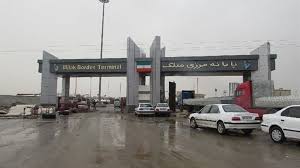Iran has begun building a wall along over 10 kilometers of its eastern border with Afghanistan, a key entry point for migrants, according to local media reports on Monday. General Nozar Nemati, deputy commander of the army’s ground forces, stated that more than 10 kilometers of the wall have been completed, with an additional 50 kilometers planned.
Iran shares a border of more than 900 kilometers with Afghanistan and hosts one of the world’s largest refugee populations, primarily comprising well-integrated Afghans who have fled conflict over the past four decades.
The influx of Afghan immigrants has surged since the Taliban took control in August 2021 following the withdrawal of US forces. While official figures on Afghan migrants are lacking, MP Abolfazl Torabi has estimated their number to be between six and seven million.
In response to the increasing number of “illegal” refugees, Iranian authorities have ramped up expulsions through the eastern border. General Nemati explained that the wall aims to enhance the control of the country’s borders and improve security in border regions.
In September, Interior Minister Eskandar Momeni announced plans to use additional measures, such as barbed wire and water-filled ditches, to fortify the border. Furthermore, Ebrahim Rezaei, spokesperson for the parliamentary National Security Committee, revealed that police are preparing to “expel more than two million illegal citizens in the near future.”
According to the official IRNA news agency, Afghans account for over 90 percent of foreign nationals in Iran, many of whom enter the country without proper identification. President Masoud Pezeshkian emphasized that the government plans to “repatriate illegal nationals to their country in a respectful manner.”
From March 2023, Iran hosted more than 2.7 million documented Afghan refugees, representing 97 percent of legal migrants in the country, as reported by the Statistics Centre.


